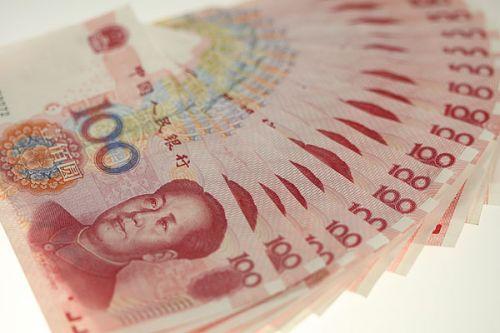
BEIJING, Oct. 14 (Xinhua) -- Chinese banks extended a forecast-beating amount of new loans in September while broad money supply growth also accelerated, buoyed by credit demand from the real economy.
New yuan-denominated lending in September hit 1.27 trillion yuan (about 192.8 billion U.S. dollars), up from 1.09 trillion yuan in August, well above market expectations, central bank data showed Saturday.
The M2, a broad measure of money supply that covers cash in circulation and all deposits, at the end of September rose 9.2 percent from a year earlier, accelerating from 8.9 percent recorded a month ago, the People's Bank of China (PBOC) said in a statement on its website.
It marked the first time M2 growth has picked up in eight months, but the rate was still 2.3 percentage points lower from a year earlier.
Newly added total social financing, a broader measure of new credit in the economy, reached 1.82 trillion yuan in September, up from 1.48 trillion yuan in August.
The combined data reflected the sharp drop in loans from banks to other financial firms, which is considered a key channel for financing shadow banking transactions, Bloomberg chief Asia economist Tom Orlik said in a research note.
China's central bank has been trying to strike a balance between defusing risks arising from shadow banking activities and guiding funds into the real economy to shore up growth.
"The government is aiming to deleverage without moving any great distance from its commitment to 6.5 percent annual GDP growth out to 2020. That implies credit to the real economy will have to stay on a rapid growth path," Orlik said.
In a bid to improve credit support for small and micro-sized enterprises, startups and agricultural production, the PBOC recently announced a targeted reserve requirement ratio (RRR) cut.
The new policy, which goes into effect in 2018, offers commercial banks an RRR cut of 0.5 to 1.5 percentage points from next year if their annual outstanding or new loans in inclusive financing reach certain requirements.
China International Capital Corporation had previously estimated that the cut, after implementation, may release more than 800 billion yuan of liquidity into the economy.
According to Jiang Chao, chief economist at Haitong Securities, the announcement, together with Saturday's M2 data, was not an indication that the central bank is loosing its stance on financial deleveraging.
"Taking into account the high leverage in the domestic real estate market and potential interest rate hike by the Federal Reserve, it's unlikely the PBOC will loosen its monetary policy," Jiang said.
PBOC data also showed that in the first three quarters, Chinese banks extended 11.16 trillion yuan of new loans, 998 billion yuan more than the same period last year.
New loans made to non-financial enterprises and government institutions hit 5.73 trillion yuan in the first nine months, indicating credit demand from the real economy.
Medium to long-term loans made to home buyers, mainly consisting of personal housing mortgages, added 4.2 trillion yuan during the period.
By the end of September, outstanding yuan loans grew 13.1 percent from a year earlier to 117.76 trillion yuan.
The narrow measure of money supply (M1), which covers cash in circulation plus demand deposits, rose 14 percent year on year in September, on par with the rate at the end of August.
The financing data came ahead of a string of closely watched economic data to be released next week, including China's third quarter GDP growth.




 A single purchase
A single purchase









